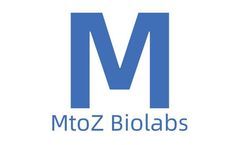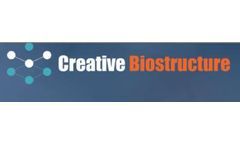Immune Inflammatory Articles & Analysis
17 articles found
Dysregulation and Tissue Damage: The Inflammatory Trade-off While ELANE is crucial for defense, its unregulated activity is a major contributor to inflammatory tissue injury. ...
Upon activation platelets discharge internal granules and extracellular vesicles (EVs) which play key roles in thrombosis and hemostasis besides immune regulation thus has a reliable basis for drug delivery systems. ...
Antibody drugs have shown significant therapeutic effects in the treatment of various diseases such as cancer, autoimmune diseases, inflammatory diseases, immune regulation and ophthalmic diseases.Analytical Ultracentrifugation (AUC) technology has a wide range of applications in the research and development of antibody drugs. ...
Cellular Sources of MMPs MMPs are produced by a variety of tissues and cells. MMPs are secreted by pro-inflammatory cells and uteroplacental cells, including fibroblasts, osteoblasts, endothelial cells, vascular smooth muscle, macrophages, neutrophils, lymphocytes, and cytotrophoblasts. ...
T cells are the most numerous and functionally complex type of lymphocytes, mainly including CD4+ T cells and CD8+ T2 cells, which play an important role in cellular immunity and assist in humoral immune response. According to their functions in the immune response, T lymphocytes mainly include helper T cells (Th cells), regulatory T cells (Treg ...
The intestinal flora is involved in many physiological and pathological processes in the host, including digestion and absorption of food, metabolism of certain nutrients and pharmaceutical compounds, development of host immunity, intestinal inflammatory states, and more. Dysbiosis of the intestinal flora is associated with a variety of human metabolic diseases, ...
Inflammation research: Understanding the role of immune cells in inflammatory diseases. The future of fluorescent liposomes The field of fluorescent liposome research is rapidly evolving, with new dyes, targeting ligands, and imaging techniques constantly being developed. ...
These signaling molecules form intricate networks that contribute to immune responses, inflammatory reactions, cell proliferation, and growth. ...
Welcome to our newest blog series where we investigate Amyotrophic Lateral Sclerosis (ALS) using our AI knowledge mapping tools. Check back for our next installment, in which we analyze transcriptomics from spinal cord samples collected from patients as well as a mouse model. In this post, we will continue to explore publicly available datasets surrounding Amyotrophic Lateral Sclerosis ...
ByPercayAI
However, abnormal complement activation can lead to excessive complement depletion, attack on own normal cells, and release of a large number of inflammatory response mediators, which induces an immune inflammatory response, thus causing damage to the organism. ...
Cytokines are classified according to their different roles in the inflammatory response: pro-inflammatory cytokines and anti-inflammatory cytokines. Pro-inflammatory Cytokines Interleukin-1 (IL-1) IL-1 is a proinflammatory cytokine that activates a variety of immune and inflammatory cells and ...
The maintenance of immune homeostasis involves a synergistic relationship between the host and the microbiome. ...
Abstract Gut microbiota play a major role in host physiology and immunity. Inflammatory bowel diseases (IBDs), the important immune-related diseases, can occur through immune system malfunction originating due to dysregulation of the gut microbiota. ...
Part II: Understanding familial and sporadic ALS Welcome to our newest blog series where we investigate Amyotrophic Lateral Sclerosis (ALS) using our AI knowledge mapping tools. Check back for our next installment, in which we analyze transcriptomics from spinal cord samples collected from patients as well as a mouse model. In this second post in our Exploring ALS series, we will begin to dig ...
ByPercayAI
However, in older populations, MSCs no longer work with the immune system and actually provide cancerous tumors with a blood supply that aids in the invasiveness and metastasis of the tumor. ...
Members of the NF-B/RelB family of transcription factors play important roles in the regulation of inflammatory and immune responses. RelB, a member of this family, has been characterized as a transcription activator and is involved in the constitutive NF-B activity in lymphoid tissues. ...
Members of the NF-B/RelB family of transcription factors play important roles in the regulation of inflammatory and immune responses. RelB, a member of this family, has been characterized as a transcription activator and is involved in the constitutive NF-B activity in lymphoid tissues. ...










